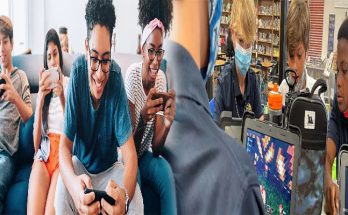Gamified learning environments have emerged as a creative and effective approach to engaging adolescents in their education. By integrating elements of game design into educational settings, these environments have the potential to enhance motivation, improve learning outcomes, and spark a deeper interest in academic subjects among adolescents. Let’s delve into the world of gamified learning environments and explore how they are transforming adolescent education.
1. Engaging and Interactive Learning Experiences
Gamified learning environments offer a highly engaging and interactive learning experience for adolescents. By incorporating game elements such as points, levels, challenges, and rewards, these environments create a sense of excitement and motivation that can drive students to actively participate in their learning. The interactive nature of gamified activities encourages adolescents to explore, experiment, and learn through a hands-on approach, making the educational experience more dynamic and enjoyable.
2. Promoting Collaboration and Competition
Many gamified learning environments encourage collaboration among students through group activities, challenges, and multiplayer games. By working together towards common goals, adolescents can develop teamwork, communication skills, and a sense of camaraderie. Additionally, elements of friendly competition can motivate students to strive for improvement, set goals, and push themselves to excel in their academic pursuits.
3. Enhancing Critical Thinking and Problem-Solving Skills
Gamified learning environments are designed to stimulate critical thinking and problem-solving skills in adolescents. By presenting learners with challenges, puzzles, and scenarios that require strategic thinking and analytical skills to overcome, these environments help students develop a deeper understanding of concepts and foster their ability to think creatively and logically. The interactive nature of games allows adolescents to apply their knowledge in practical situations, honing their problem-solving skills in a fun and engaging way.
4. Personalized Learning Pathways
One of the key benefits of gamified learning environments is the ability to offer personalized learning pathways for adolescents. Through adaptive learning algorithms and feedback mechanisms, these environments can tailor the educational experience to meet the individual needs and preferences of each student. By adjusting the difficulty level, pacing, and content to suit the learner’s abilities, gamified environments can provide a more customized and rewarding learning experience that caters to the diverse needs of adolescents.
5. Immediate Feedback and Progress Tracking
Gamified learning environments often include features that provide immediate feedback and allow students to track their progress in real-time. By receiving instant feedback on their performance, adolescents can identify areas for improvement, celebrate their successes, and stay motivated to achieve their academic goals. The feedback mechanisms in gamified environments help students monitor their learning journey, set targets for improvement, and take ownership of their educational outcomes.
6. Cultivating a Growth Mindset
Gamified learning environments can contribute to the development of a growth mindset in adolescents. By encouraging learners to embrace challenges, persist in the face of setbacks, and view mistakes as opportunities for learning and growth, these environments foster a positive attitude towards learning and personal development. The game-based approach to education instills a sense of curiosity, resilience, and adaptability in students, empowering them to approach academic challenges with confidence and determination.
7. Enhancing Motivation and Retention
One of the key advantages of gamified learning environments is their ability to enhance student motivation and retention of information. By leveraging the power of game mechanics such as clear goals, instant feedback, progressive challenges, and rewards, these environments create a sense of achievement and accomplishment that motivates adolescents to engage with the material and persist in their learning. The element of fun and excitement in gamified activities can lead to improved retention of content and a deeper understanding of academic concepts.
Gamified learning environments offer a unique and innovative approach to engaging adolescents in their education and fostering positive learning outcomes. By providing engaging and interactive learning experiences, promoting collaboration and competition, enhancing critical thinking and problem-solving skills, offering personalized learning pathways, providing immediate feedback, cultivating a growth mindset, and enhancing motivation and retention, these environments are transforming the landscape of adolescent education. As educators continue to explore the potential of gamification in learning, the future of adolescent education holds exciting possibilities for harnessing the power of games to inspire and empower the next generation of learners.





